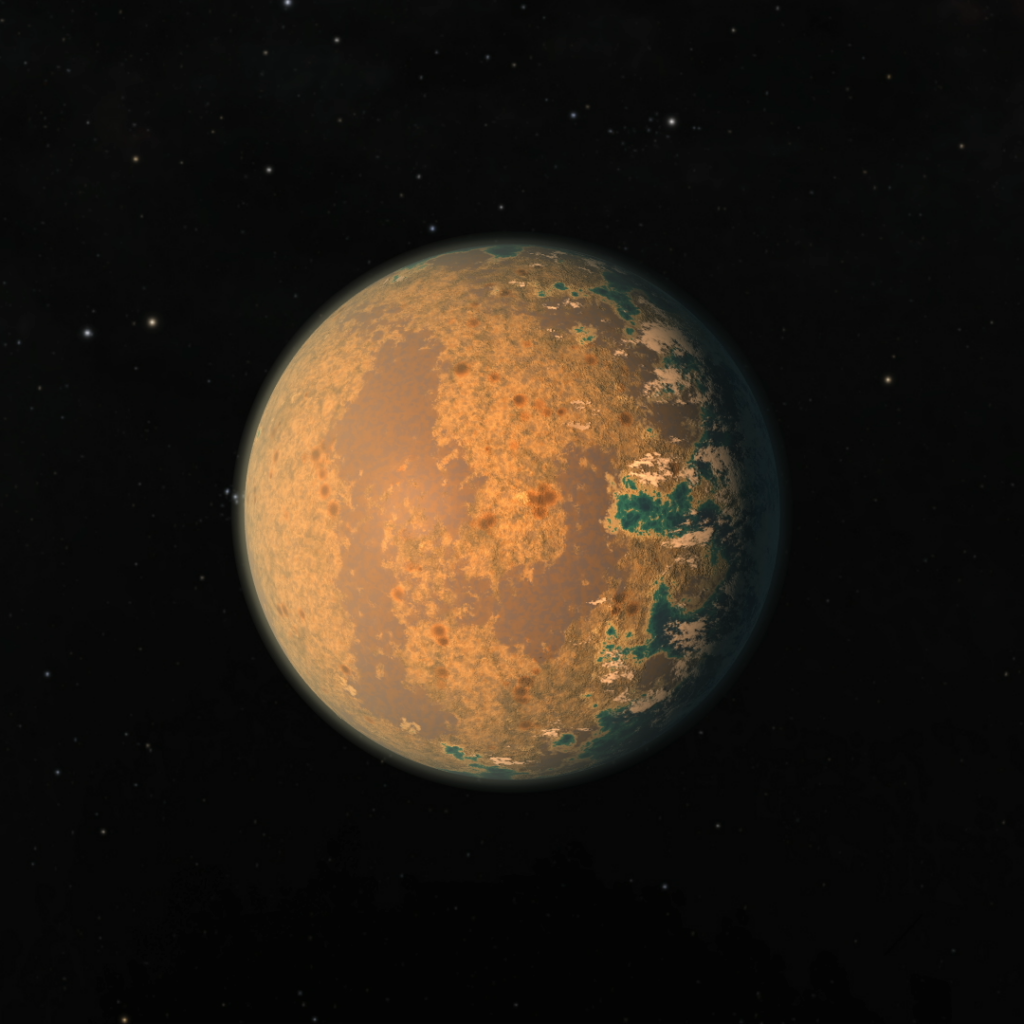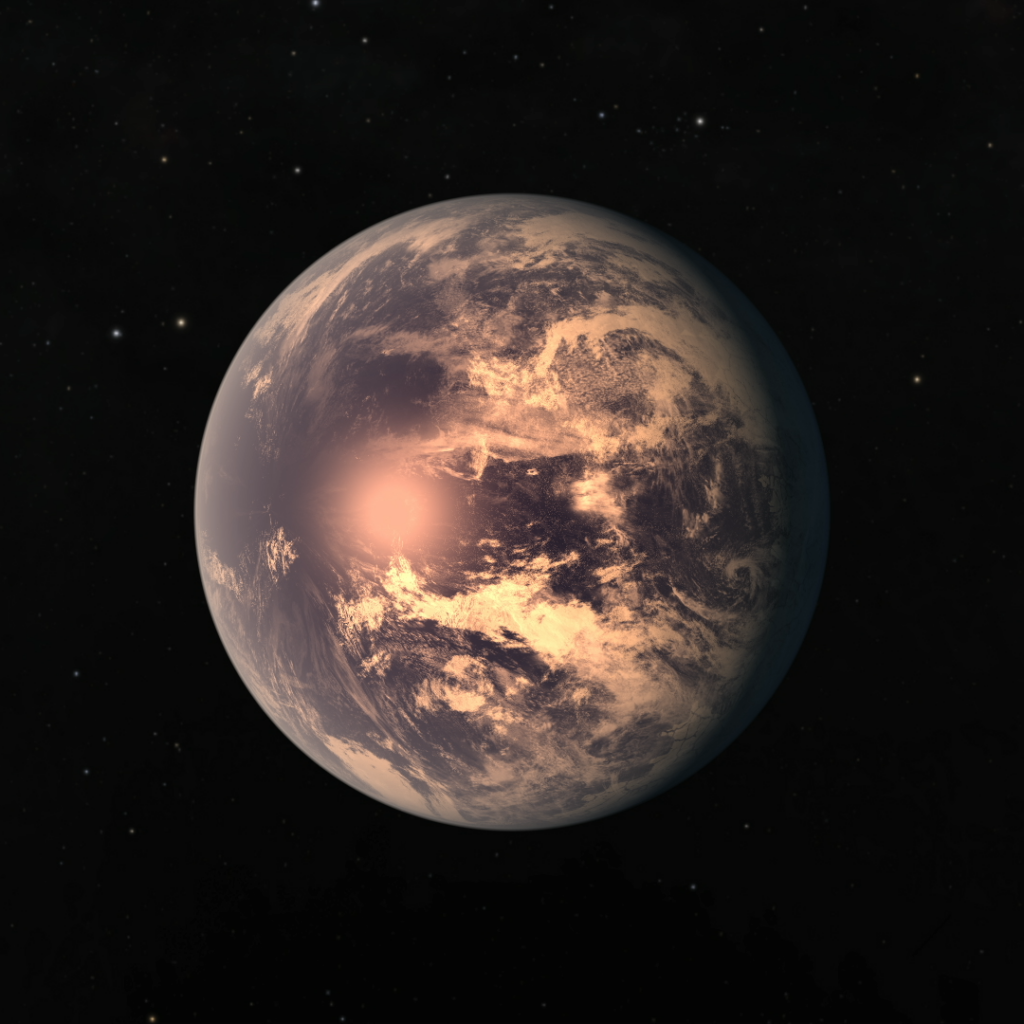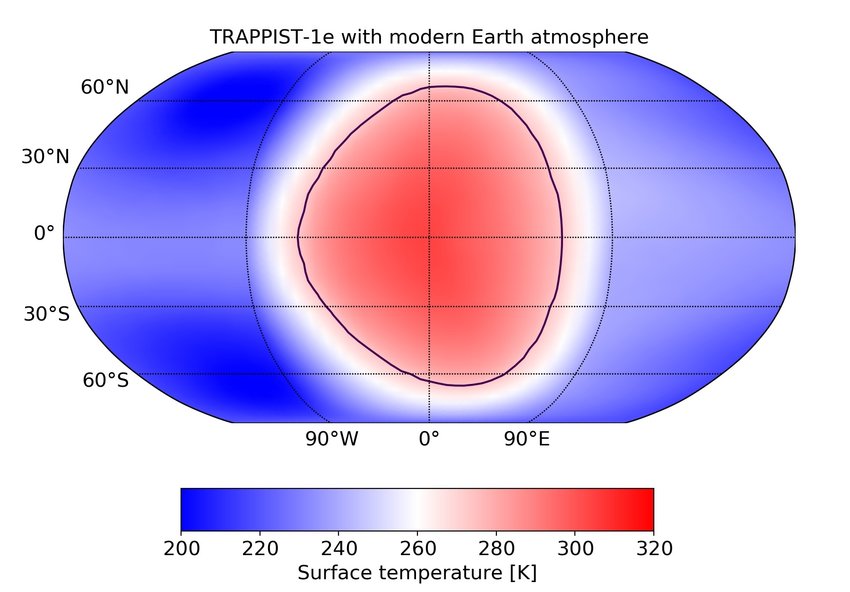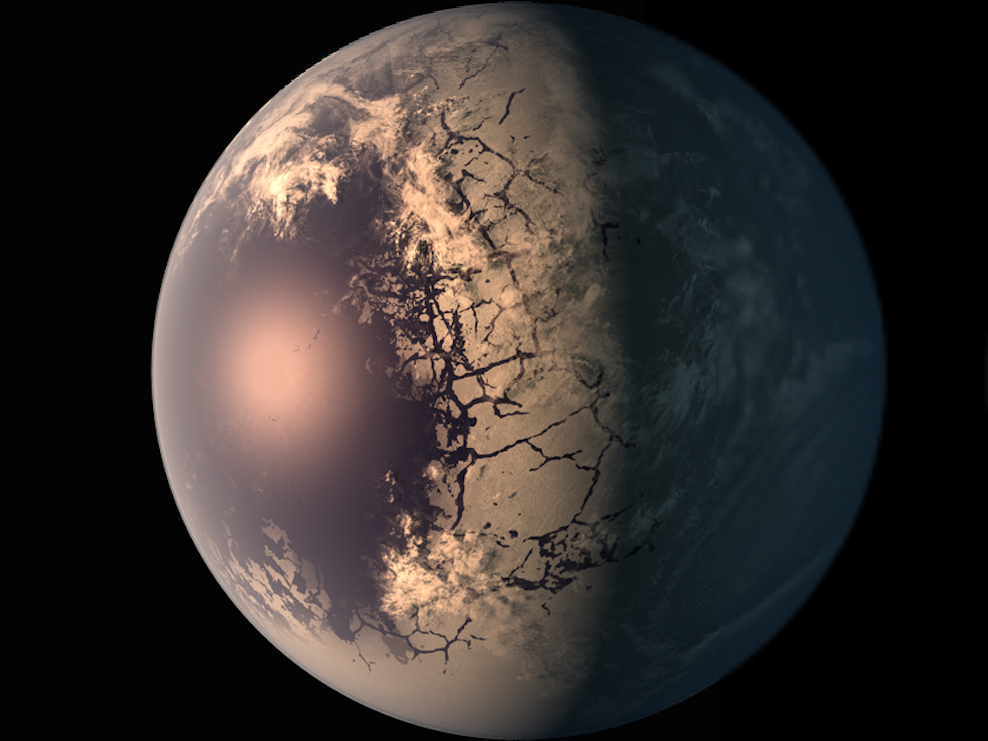The most interesting feature of the TRAPPIST-1 system is the planets that are as similar to Earth as possible. They are comparable to our own planets by size and they potentially might cherish life. There are three of them: TRAPPIST-1d, TRAPPIST-1e and TRAPPIST-1f. Each of them is terrestrial in its own way, and scientists have their own questions for each.

“MarsAndVenus” TRAPPIST-1d
TRAPPIST-1d in its parameters resembles Mars, which is located in the place of Venus. The third planet of the red dwarf system orbits around it at a distance of slightly more than 3 million km, and a year there it lasts only 4 Earth days. As with the previous two bodies, the rotation of the planet around its own axis can be synchronized with the orbital motion. In this case, it is always turned to its sun with the same side.
TRAPPIST-1d is a small and fairly light planet. Its radius is 79%, and its mass is 30% of Earth’s. A small mass means that this body cannot have a dense atmosphere, and in itself it is poorer in heavy elements than our planet. It may not have a magnetic field powerful enough to protect against radiation.

Conditions on TRAPPIST-1d are currently the subject of serious controversy. A small red sun can heat the planet to an average temperature of -7°C. It is slightly more than on Earth. But the loss of hydrogen from the atmosphere can greatly dry and heat it. Then the climate would be more Venusian than terrestrial.
At the same time, scientists have serious doubts about the ability of such a light object to hold a heavy atmosphere. In the Solar System, Mars has almost completely lost its gas shell due to its small mass. So, in fact, TRAPPIST-1d may turn out to be similar not only to Earth or Venus, but also to the Red Planet.
Terrestrial TRAPPIST-1e
The fourth planet of the system orbits at a distance of about 4.3 million km from the star. A year lasts only six Earth days there. But otherwise, this planet resembles our world more than all other celestial bodies in the system.
The mass of TRAPPIST-1e is 77% of the mass of the Earth, and the radius is 91%. It is not known for sure what albedo its surface has. Based on the mass of the planet, the most of its surface must consist of land rather than being completely covered by ocean.

The central luminary can heat this planet to a temperature of -48 to -16°C. In the former case, its oceans would have to freeze, and in the latter — to remain mostly liquid, albeit cold.
But this estimate is obtained without taking into account the atmosphere of the planet. The fact is that hydrogen leaks and other traces of atmospheric gases have not yet been discovered. So it can be thin, like on Mars, it can be Earth-like, or it can be thick, like on Venus. Or it may be absent altogether.
Because of this, the Earth-likeness of the fourth planet of the TRAPPIST-1 system is quite peculiar. The average assessment of its characteristics really allows for the existence of conditions similar to Earth’s. But it can also be too cold and devoid of atmosphere. Or, on the contrary, it might as well be a “bath” of boiling oceans.

The further confusion in the assessment of conditions on the planet is introduced by its possible tidal locking. TRAPPIST-1e may be facing its star with the same side all the time. In this case, one of its hemispheres will be significantly hotter. If the atmosphere and hydrosphere still exist on this body, then in this case, powerful winds will blow from the day side of the planet to the night side, pregnant with precipitating clouds.
Our conversation about conditions on TRAPPIST-1e should be complemented with gravity, which is 93% of Earth’s. That is, if the planet had favorable climatic conditions, then we would feel at home on it. And only the sun in the sky would be four times larger than usual, but at the same time a little dimmer and redder.
The Waterworld TRAPPIST-1f
Just like its two predecessors, TRAPPIST-1f orbits inside a red dwarf’s “habitable zone.” But despite the fact that its rotation around the central star lasts only 9 days, its orbit lies closer to the outer limit of the region where liquid water can exist.

This body could be similar to Mars, but its radius is about 4% larger than Earth’s, and the mass is only 68% of the mass of our planet. At the same time, the models show that almost a fifth of it must be water. That is, TRAPPIST-1f is an oceanoid whose surface is covered by an ocean hundreds of kilometers deep.
The local sun could only heat the planet to -54°C. But a powerful hydrosphere together with tidal entrainment should lead to water evaporation. As a result, a thick atmosphere would form there. If this is true, then the temperature on the surface may be much higher than the Earth’s.
As in the case of TRAPPIST-1e, scientists have created many models of this world that give different estimates of its habitability. It is expected that the most promising in this regard should be the terminator zone — the frontier between the night and day hemispheres. However, if the atmosphere of the planet is really dense, then the irregularities of the climate can be generally leveled out, and all of it may be viable more or less.
